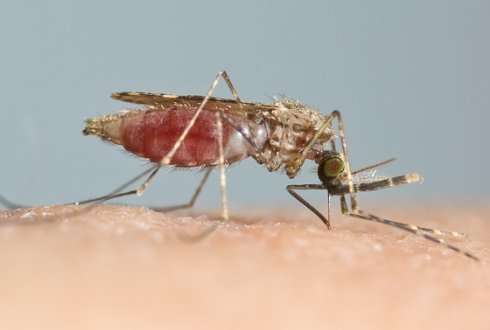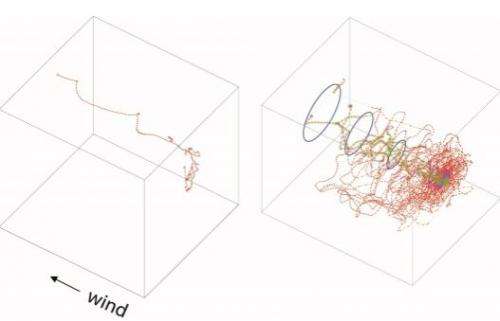Malaria mosquitoes go to work cautiously before landing on human skin and biting. Just before a mosquito lands, it reacts to both odours and heat given off by the human body. Researchers at Wageningen University came to this conclusion after studying images made with infrared-sensitive cameras. Their research was published in the scientific journal PLOS ONE on 2 May.
Most malaria mosquitoes prefer human blood. They fly in the dark while their host is sleeping. In order to locate a host, they focus on traces of carbon dioxide, released by all animals, and on characteristic human odours. At a distance of 1.5 m from their host, they mainly follow body odours. Just before they land, however, heat radiating from the human body also plays a significant role.
The researchers and technicians at Wageningen University, which is part of Wageningen UR, worked with colleagues from Noldus Information Technology BV using video recordings and automated 3D image analyses to clarify how malaria mosquitoes find their host.
In order to investigate seeking behaviour in mosquitoes, the researchers placed the insects in a special dark wind tunnel measuring 60 by 60 cm, with a length of 1.6 m. The air stream had a constant temperature and humidity, and a speed of 20 cm/second. The flight of each mosquito (Anopheles gambiae) in the tunnel was filmed by means of infrared-sensitive cameras.
Wind tunnel with the flight route of a malaria mosquito. On the left, without odour source; on the right, with source of odour and heat. The air stream in the tunnel goes from right to left. The mosquito starts at the left-hand side and flies against the air stream. If no odours are present, the mosquito lands on the right-hand wall after only a few seconds. When odour and heat are present the mosquito takes a longer (on average, four times longer) and more complex route to the odour source, and then proceeds to land.
When human odours were absent, the mosquitoes continued to fly into the wind through the tunnel. As soon as the researchers added an odour to the air stream, the mosquitoes followed a complex and long route to the source, and this took about twice as long as without odours. Adding a heat source (34°C, the same as human skin) again doubled the length of the search and was crucial for finding the odour source. Adding heat caused the flight pattern to change drastically whenever mosquitoes came near (about 20 cm) to the source. The exact mechanism of landing will be the subject of a future investigation.
This research at Wageningen demonstrates that the interaction of odour and heat is effective in bringing mosquitoes to a host. This is the first study to make malaria mosquito flight behaviour 'visible' in the dark and it demonstrates that insects are extremely good at orientating themselves towards their host at night. This discovery means that existing odour traps can be enhanced by, for example, adding a source of heat, or by changing the position of the bait in relation to the trap opening. This is one of the ways of controlling malaria, still a serious disease affecting millions of people in large parts of the world. The new information on transmission by the malaria mosquito can be used to combat the disease more effectively.
More information: Spitzen, J. et al. A 3D analysis of flight behavior of Anophelels gambiae sensu stricto malaria mosquitoes in response to human odor and heat, PLOS ONE, 2 May 2013.
Journal information: PLoS ONE
Provided by Wageningen University




















